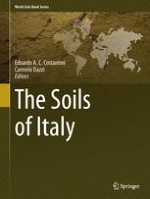2013 | OriginalPaper | Buchkapitel
2. Climate and Pedoclimate of Italy
verfasst von : Edoardo A. C. Costantini, Maria Fantappié, Giovanni L’Abate
Erschienen in: The Soils of Italy
Verlag: Springer Netherlands
Aktivieren Sie unsere intelligente Suche, um passende Fachinhalte oder Patente zu finden.
Wählen Sie Textabschnitte aus um mit Künstlicher Intelligenz passenden Patente zu finden. powered by
Markieren Sie Textabschnitte, um KI-gestützt weitere passende Inhalte zu finden. powered by
